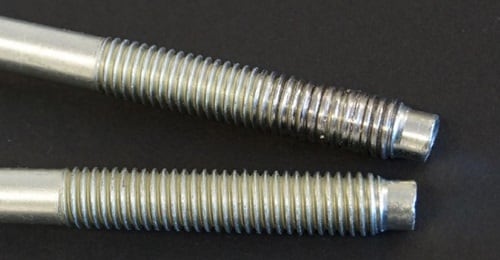Thread Sealant Best Practices
Thread Sealant Best Practices
Written By: Tyler McGinnis, Technical Solutions Provider | June 2019
Swagelok tubing systems offer many benefits over traditional pipe systems, including ease of installation, reduced leak points, and long-term cost of ownership. Whenever possible, system owners should eliminate as many threaded connections as the system will allow. Unfortunately, a 100% pipe thread-free system isn’t always attainable. Many times, system components are manufactured with threaded connections such as NPT (National Pipe Taper) because it is a common thread type that most manufacturers can adapt to.
Something to keep in mind is tapered threads require the use of a thread tape or sealant to prevent the fitting materials from galling upon (dis)assembly. Galling, also known as “cold-welding”, happens when threads seize as friction and pressure are applied, commonly resulting in the inability to remove the fitting from the body. This is frequently experienced when tightening bolts or other threaded components quickly and without a lubricant. The image below compares two threaded bolts, one with galled threads (top), and normal, functioning threads (bottom).
To ensure that tapered connections perform well in your system and offer trouble free service, installers should ensure that they are tightened correctly, sufficiently, and that they are lubricated/sealed properly.
When selecting a lubricant or thread sealant, all system parameters should be considered. For example, PTFE based materials will generally have an upper operational range of 300*F to 400*F, while silver based lubricants can operate in excess of 1000*F. System media will also be in contact with the lubricant/sealant, so material compatibility should be reviewed. It is also important to review the installation process to ensure that the lubricant/sealant won’t affect other processes.
I have consulted in some facilities that do not allow Teflon tape. In one instance, an operator diagnosed a failed regulator whose orifice was plugged by a small piece of thread tape. It was later determined that the tape was incorrectly installed, and a small piece sheared off the threads when the system was pressurized. It then washed downstream and was trapped in the regulator opening and caused a system to shut down. After this, the facility decided to switch from Teflon tape to a thread sealant paste.
Once your facility has decided on which thread sealant/lubricant to use, it is necessary to institute a few best practices. When working with a PTFE tape, remember to select a quality product that is at least 3 mil thick, apply between 2-3 wraps, and start the first wrap on the third thread of the fitting. When applying a sealant paste, be sure to start on the third thread and apply it around the threads, ensuring complete coverage. Also remember to completely cap off anaerobic thread sealants as the product will begin curing in the presence of oxygen.
For more information about which thread sealants/lubricants will work well in your system, feel free to consult the Swagelok Leak Detectors, Lubricants, and Sealants product literature, or reach out to me at tyler.mcginnis@swagelok.com.

